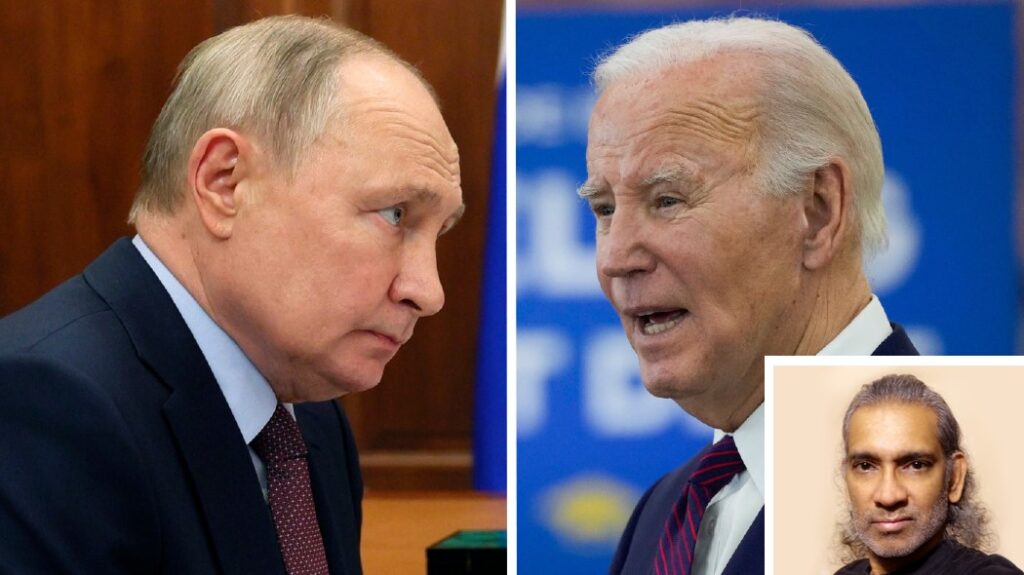Will proposed seizure of $300 bn frozen assets break Russia or bite the West?
4 min read
Dev Chandrasekhar
A glance at the global financial stage reveals a critical game of high-stakes poker unfolding. The pot: an eye-watering $300 billion. Less than a fortnight ago, Western officials meeting in Davos expressed their openness to the idea of seizing $300 billion of Russia’s assets to aid Ukraine. The same Russian government assets that were frozen in the West following Russia’s invasion of Ukraine in 2022, as the United States and its allies imposed sanctions on transactions with Russia’s central bank and finance ministry.
The outcome of this tense showdown might influence the direction of the Ukrainian war, shake the foundations of the global financial order, and place those engaged in a quandary between potential triumph and immense peril.
Pressure from the costly Ukrainian war effort and concerns over an oncoming recession are nudging the Western powers towards this precipitate move. The tantalizing prospect of avoiding additional debt and eluding political roadblocks in Republican-dominated legislatures of the US further fans the flames of appropriation.
But this path is strewn with challenges and misgivings. Legal purists question the foundations of such an action, fearing that it sets a dangerous precedent and risks hat could destabilize the West’s financial reputation. The scramble among G7 leaders to find acceptable grounds, within the framework of international law—some G7 members have expressed reservations about the potential precedent, process, and consequences of executing such a significant action against central bank holdings—further highlights the enormity of this endeavor and its potential to be perceived as sheer financial pillage.
Russia, on the other hand, has predictably warned of disastrous repercussions, arguing that such an action would effectively put the Western governments in default. Yet, with ratings agencies offering their support, this objection appears to be falling on deaf ears, thus smoothing the path toward a potential seizure.
The process of confiscating the $300 billion Russian assets—a significant portion of which are lodged in Belgium’s Euroclear bank—adds intriguing complexities. Euroclear, one of the world’s largest providers of domestic and cross-border settlement services for bond, equity, ETF, and mutual fund transactions, operates in a regulatory-intensive industry; any attempts to seize assets held in it could result in convoluted legalities.
To circumvent the need for outright seizure, Belgian Prime Minister Alexander de Croo has suggested an intricate, yet potentially viable avenue: leveraging the frozen reserves by using them as collateral for “reparation bonds”—issued by presumably Ukraine against the collateral of Russia’s frozen assets. These bonds would be sold to investors with the promise of future payments in the event of Russia compensating Ukraine for war damages. Essentially, it’s a method to transform a part of Russia’s frozen assets into immediate financial resources for Ukraine’s economic needs without directly invoking seizure, thus bypassing many of the legal and reputational stumbling blocks.
While attractive in theory, this inventive method comes faces significant challenges. There remains the overarching question of legality, given the unique and unprecedented nature of using another country’s frozen assets as collateral. Furthermore, the effective functioning of these bonds would be contingent upon eventual compensation by Russia for war damages, adding an element of speculation to the financial instrument. Lastly, the willingness of potential investors to buy these instruments also hinges on the perceived risk-return trade-off associated with the underlying collateral.
The proposed seizure and the convoluted maneuvering could surely significantly burden Russia’s financial system, but it might concurrently damage the West’s financial standing and stability. The possibility of collateral trust in Western assets eroding and of this large-scale seizure setting an alarming precedent has real potential to trigger unpredictable and detrimental ripple effects.
Russia’s economy continues to grow despite the sanctions and asset freezes. Should it come to pass, Russia may deem the seizure as a calculated risk, unveiling the US dollar’s vulnerability as a reserve currency and threatening the collapse of Western economies.
It’s important to remember that, though its assets have been out of Russia’s reach for nearly two years, the country’s trade is thriving and profitable, and now largely denominated in currencies other than the dollar. The proposed confiscation may not inflict considerable harm on Russia, who arguably could have stashed away another $300 billion in the intervening years. Thus, the West’s maneuver may cause little more than a ripple in Russia’s financial pond. However, the denting of Western credibility might fast-track the decline of the dollar and the euro while sending waves of panic among those holding these two currencies.
Face with a humiliating loss in Ukraine, the West stands on the brink of decision: Should it risk holding and playing its $300 billion hand, potentially weakening Russia, but also exposing itself to significant repercussions? The answer could well redefine not only the progression of the Ukraine war but also the global financial landscape in the years to come.
( Dev Chandrasekhar advises corporates on the Big Picture. The views expressed are his personal opinion)






